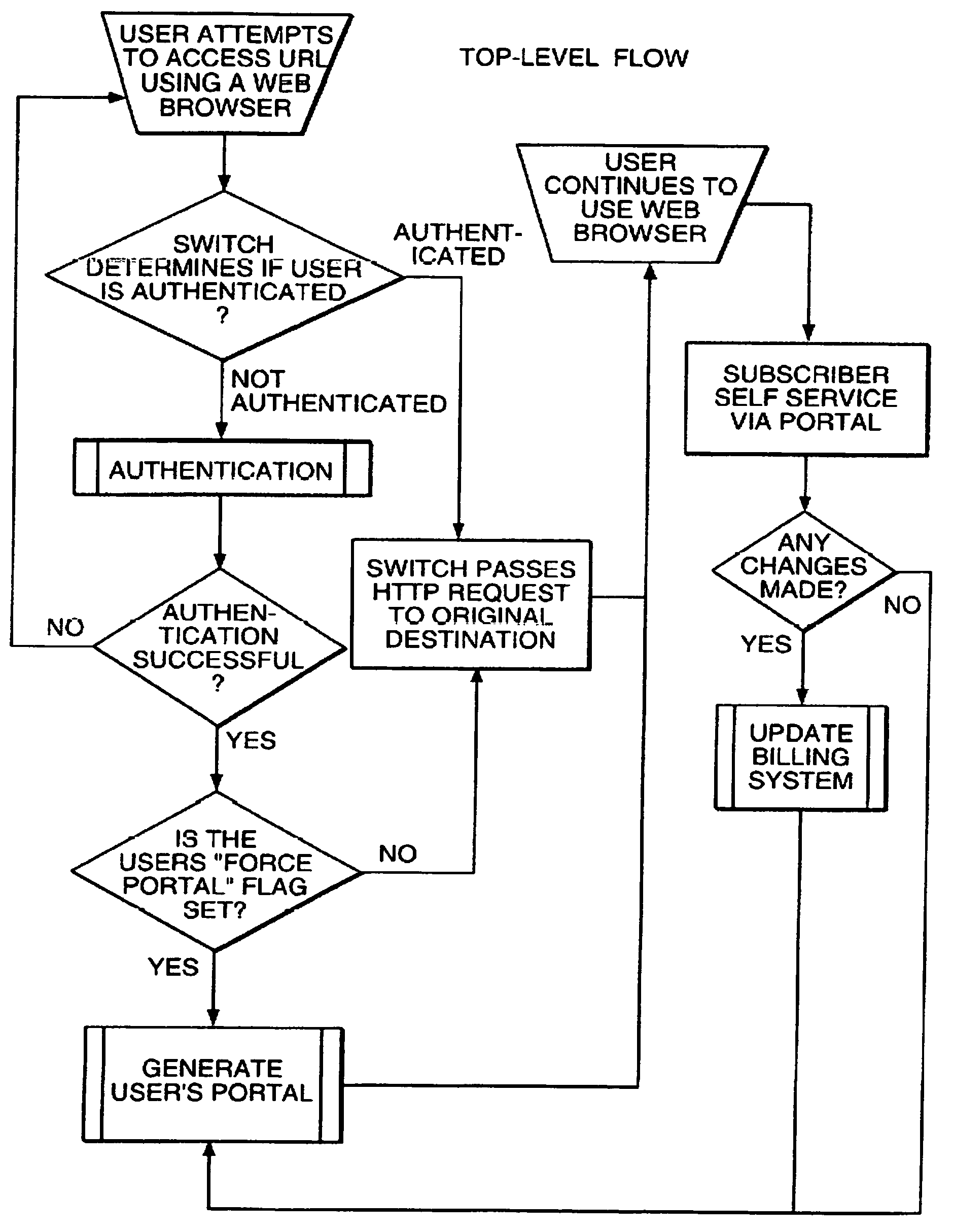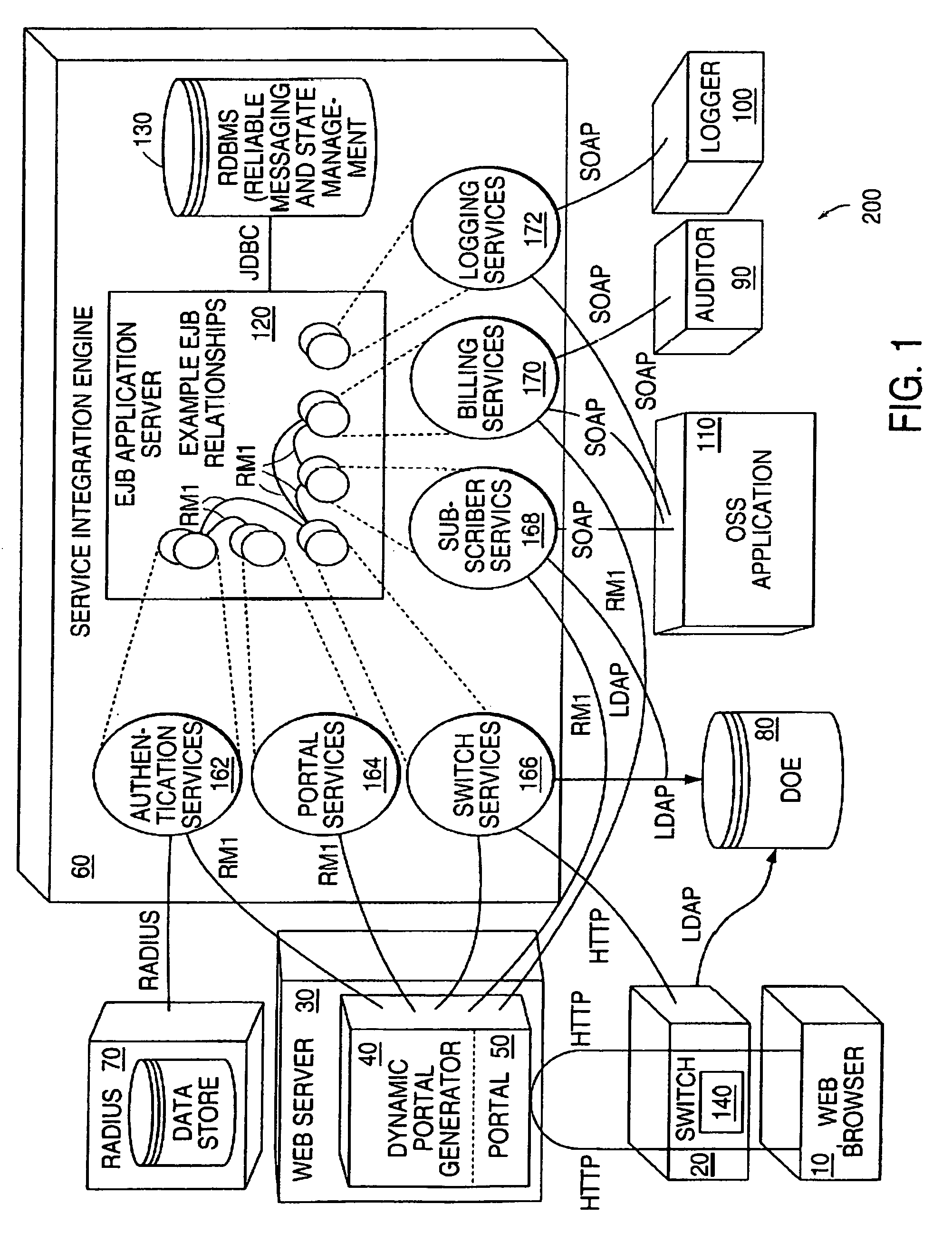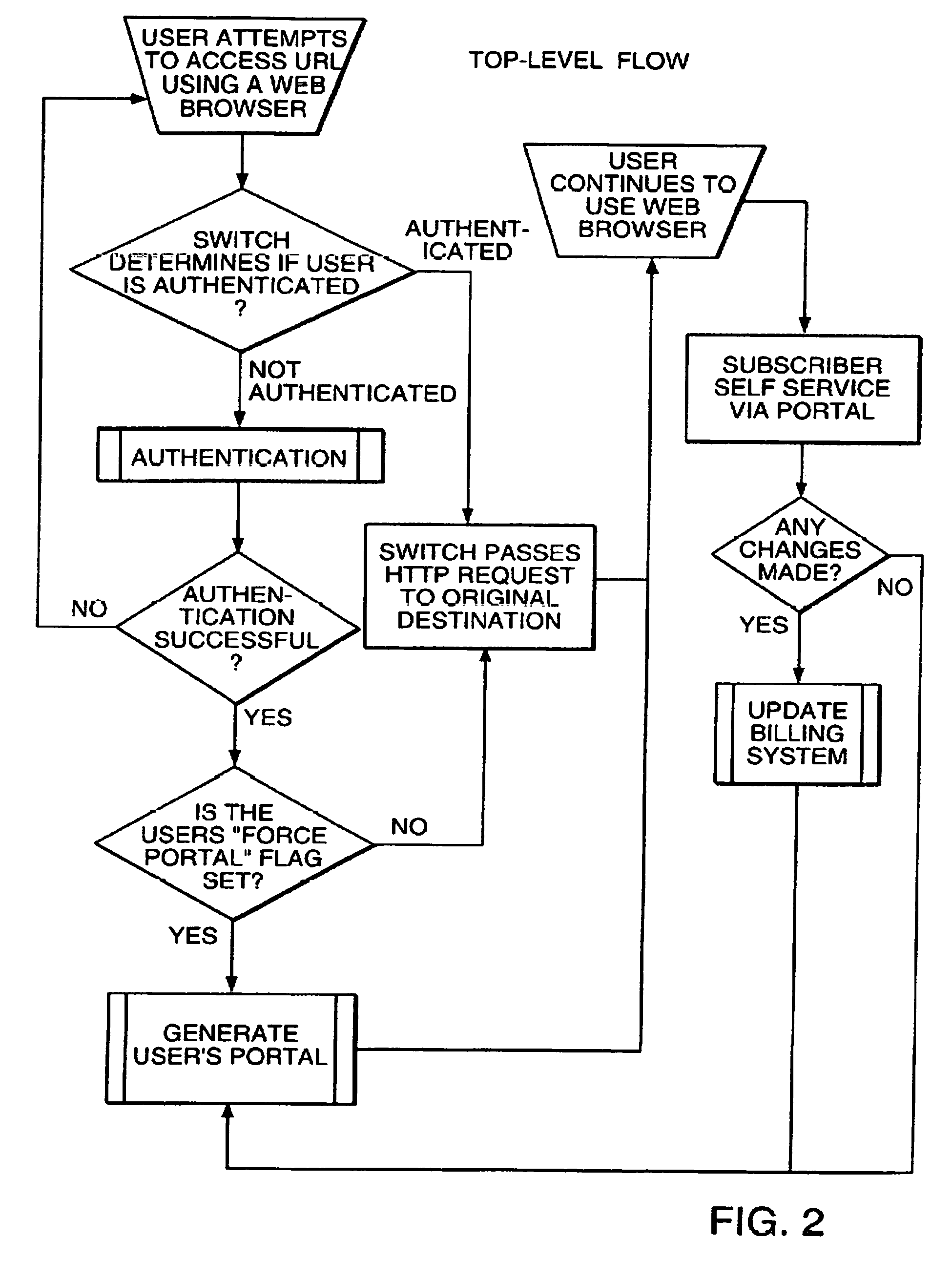Managing content resources
a content resource and content technology, applied in the field of managing content resources, can solve the problems of difficult to find consumers willing to pay for content, difficult to ensure, and the effort required to incorporate all possible combinations of available content is beyond the ability and resources of substantially all providers, so as to achieve effective management and direct content resources, enhance the subscriber experience, and achieve greater security
- Summary
- Abstract
- Description
- Claims
- Application Information
AI Technical Summary
Benefits of technology
Problems solved by technology
Method used
Image
Examples
first embodiment
[0098]In a first embodiment, a Directory Server is used as the repository (DOE 80) for configuration information and provides the ability to store large amounts of information regarding subscribers, content, and rules such that switches can read the information efficiently and provide services that subscribers are requesting from Providers. (In another embodiment described below, DOE 80 has relational database aspects.) Productive results are achieved by organizing the Directory Server's directory structure effectively and placing objects in advantageous locations within the directory structure, as described below.
[0099]The Directory Server manages bindings between a subscriber, and the rules and attributes pertinent to the subscriber's effective use of the network. The Directory Server offers key features that facilitate the management of this information. First, the Directory Server has a hierarchical nature that allows for convenient organization of people into communities, such ...
second embodiment
[0179]The second embodiment eliminates or nearly eliminates scenarios that cause DOE 80 to serve as a message passing system, by modifying switch 20 software in two ways. First, switch 20 communicates data requests through service integration engine 60 rather than directly to DOE 80. Second, as noted above, the underlying transport changes from LDAP to a different protocol. Since switch 20 communicates through service integration engine 60, a protocol is used that is particularly suitable for such a communication path, by offering transactional, reliable, and fault-tolerant semantics at the transport layer.
[0180]In addition, the second embodiment defines a new schema specifically optimized for service integration engine 60. The schema meets the evolving needs of engine 60 while providing backward compatibility for features of the original data model.
[0181]With respect to the interface between switch 20 and service integration engine 60 and the accompanying schema, a transactional sc...
PUM
 Login to View More
Login to View More Abstract
Description
Claims
Application Information
 Login to View More
Login to View More - R&D
- Intellectual Property
- Life Sciences
- Materials
- Tech Scout
- Unparalleled Data Quality
- Higher Quality Content
- 60% Fewer Hallucinations
Browse by: Latest US Patents, China's latest patents, Technical Efficacy Thesaurus, Application Domain, Technology Topic, Popular Technical Reports.
© 2025 PatSnap. All rights reserved.Legal|Privacy policy|Modern Slavery Act Transparency Statement|Sitemap|About US| Contact US: help@patsnap.com



